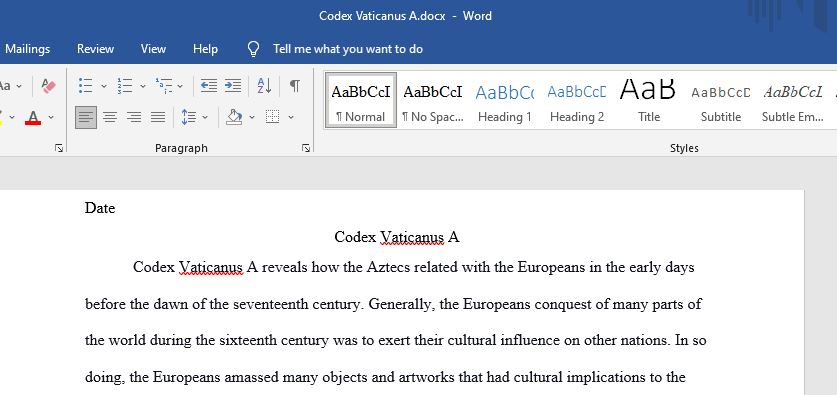Writing Question-Codex Vaticanus
Assignment: Choose one of the questions below and write a 3-4 page, double spaced essay. For your answer draw from lectures, discussion sections, the assigned readings, and the Met timeline when pertinent. Use MLA in text citation for references or quotations drawn from the assigned readings. MLA in-text citation style uses the author’s last name and the page number from which the quotation or paraphrase is taken, for example: (Smith 163). For the Met timeline, include a footnote with the http link where you found the idea or quote.
Approach: We are looking for composed and thoughtful essays with clearly defined theses and points of view. Please underline your thesis. Remember to use the question as a starting point, but do not simply restate it as your thesis. Choose your examples of art and architecture carefully to make sure they work together in your essay to help develop your thesis. Think hard about what the question is asking you to demonstrate. Remember that even if the question does not explicitly ask you for historical information, we assume that you will frame your answer with the relevant background information that you have learned in class. The questions assume that in answering, you will provide historical context, drawing on the required readings and on lectures when pertinent. But the questions now also ask you to use visual analysis more explicitly to provide evidence for your arguments. Remember is not a research paper, so it is not necessary to go looking for art or artists that we haven’t gone over in class or are not in the time period covered by the class. In other words, do not turn in a paper about the Italian artist Caravaggio, for instance, as we stopped short of the period (17th century) when he was active. If you choose to discuss art or artists that we have not covered, then make sure that their work is pertinent to the question you are answering and that you make your sources clear. Remember that Wikipedia is not a scholarly source, and that acceptable sources are art history textbooks, articles from JStor, scholarly books/chapters.
Questions:
#1 What do the reactions to and criticisms of Michelangelo’s Last Judgment and Veronese’s Last Supper reveal about the Catholic church’s view of religious images and artistic license during and after the Counter Reformation? In your essay, discuss at three details in each work that drew criticism and explain why.
#2 What do the illustrations in the Codex Vaticanus A reveal about the relationship between Europeans and the Aztecs they colonized in central America? In your essay, discuss in detail at least three different types of images that appear in the Codex.
#3 According to Margaret Carroll, what was the intended purpose of the Arnolfini double portrait? In your essay, identify the figures represented and discuss at least three different, visual details in depth and explain how they contribute to the work’s meaning and purpose.
#4 Why does Northern Renaissance/Netherlandish painting of the 15th century take a microscopic/telescopic visual approach to the depiction of devotional subjects? In your essay discuss in depth at least two different works of art covered in class.
Requirements: Other | 3 pages, Double spaced
Answer preview:

word limit:1070
